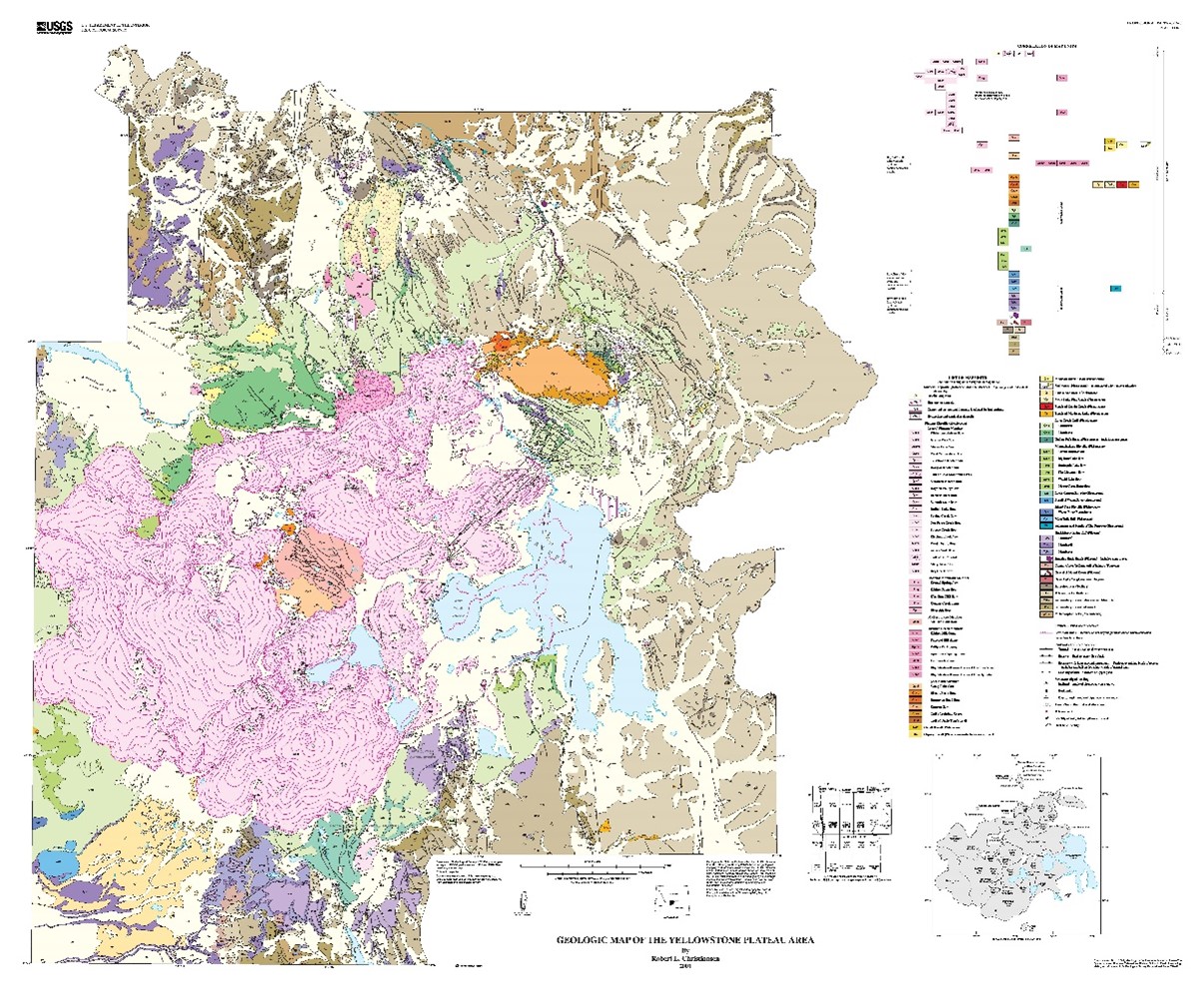Remembering the outstanding legacy of Bob Christiansen
By Patrick Muffler, Andy Calvert and Shaul Hurwitz DAILY MONTANAN
USGS geologist and the founding Scientist-in-Charge of the Yellowstone Volcano Observatory Robert “Bob” Christiansen died on Sept. 15, 2022, in Palo Alto, California.
Bob, or “Chris,” as his colleagues and friends often called him, leaves a legacy of scientific achievement, articulate writing, and a warm and humble personality that endeared him to all. He received his doctorate from Stanford University and then began working at the USGS in 1961. He initially worked for 10 years in the Denver, Colorado, office and then in the Menlo Park, California, office. He retired in 2003 but remained an active emeritus scientist until his death.
Bob was part of a USGS group that was tasked in 1965 with creating a comprehensive geologic map of the young volcanic rocks in Yellowstone. The study was funded mainly by NASA as a test area to compare with images captured by satellites from space. Bob and his colleagues tried to understand when and how the volcano erupted, how much magma was vented, and where it went.
From 1966 to 1971, Bob and USGS colleagues (mainly Dick Blank) spent the summer months in Yellowstone carrying out field work and mapping. In other times of the year, they analyzed aerial photographs, scrutinized the rocks they sampled, measured the chemical composition of the rocks, and determined their ages. The work lasted long beyond the initial field seasons as Bob and his collaborators worked to understand the complex geologic history of the region.
The results of these monumental efforts were published in a 2001 USGS Professional Paper that is a comprehensive description of the volcanic history of Yellowstone and a geologic map of the Yellowstone Plateau. Bob also led the publication of a 2007 USGS report titled “Preliminary Assessment of Volcanic and Hydrothermal Hazards in Yellowstone National Park and Vicinity.”
Bob recognized that three large explosive eruptions were associated with formation of calderas 2.08, 1.30, and 0.63 million years ago. Bob also published two journal papers, in 1984 and in 1991 (mainly with USGS colleague Wes Hildreth), that describe in great detail the chemical and isotopic composition of Yellowstone’s volcanic rocks. With USGS colleagues led by Gordon Eaton, Bob co-authored a 1975 journal paper that used multiple datasets to identify magma beneath Yellowstone.
Although very well known for his work in Yellowstone, Bob also contributed fundamental advances to our understanding of volcanoes throughout the United States. In the early part of his career, Bob published several papers with USGS colleague Peter Lipman on volcanism in Southern Nevada as part of the Department of Energy efforts to develop the Nevada Test Site northwest of Las Vegas. Bob and Peter also published seminal papers on volcanism and plate-tectonic evolution of the Western United States in the Cenozoic period, which began about 66 million years ago and extends to the present. Between 1971 and 1973, Bob was stationed at the Hawaiian Volcano Observatory, where he investigated explosive eruptions at Kīlauea Volcano, including the tragic base surge in 1790 (which killed several hundred Hawaiians) with USGS colleague Don Swanson, and violent hydromagmatic eruptions that left extensive deposits in the volcano’s summit region.
Bob was the chief scientist for monitoring and scientific analysis of the 1980 eruption at Mount St. Helens in Washington, where he detailed the chronology of eruptive activity. His work in the Cascades was not solely restricted to Mount St. Helens. With USGS colleague C. Dan Miller between 1973 and 1977, Bob mapped and studied the voluminous and long-lived Mount Shasta in Northern California. In the 1980s he returned to study its large sector collapse, which was only conclusively identified after the 1980 Mount St. Helens eruption left deposits that closely resembled those at Mount Shasta. In the 1990s and after retirement, he expanded his mapping east to connect with USGS colleague Julie Donnelly-Nolan’s mapping at Medicine Lake volcano. With USGS colleagues, in 2002 he published a detailed study of the remarkable Shastina eruptive phase of Mount Shasta—an episode that might have lasted 200 years during which the entire Shastina cone grew on the west shoulder of the volcano, and the Black Butte dome formed on the volcano’s west flank. With USGS colleague Mike Clynne he also worked to better understand the details of the 1915 eruption of Lassen Peak.
Bob Christiansen will be remembered by his many colleagues and friends as insightful and meticulous in his many scientific investigations. In addition to his incredible scientific achievements, Bob served in several management positions at the USGS. He was the coordinator of the USGS Geothermal Research Program between 1976 and 1979, and he served as Chief of the USGS Branch of Igneous and Geothermal Processes between 1987 and 1991.
Bob’s comprehensive research at Yellowstone is the foundation for our current understanding of the volcanic, earthquake, and hydrothermal systems of Yellowstone. It is taught in every evening lesson by a ranger and written in every pamphlet and book on geology handed out in the park visitor centers. Bob fondly described his years of research at Yellowstone in a 2009 interview. He will be sorely missed by everyone who knew him, and we are better scientists and people, and know far more about the volcanoes of the United States, thanks to his wisdom, mentorship, and dedication.
Yellowstone Caldera Chronicles is a weekly column written by scientists and collaborators of the Yellowstone Volcano Observatory. This week’s contribution is from Shaul Hurwitz, research hydrologist, Patrick Muffler, emeritus geologist, Andy Calvert, research geologist, and Jake Lowenstern, research geologist, all with the U.S. Geological Survey.














